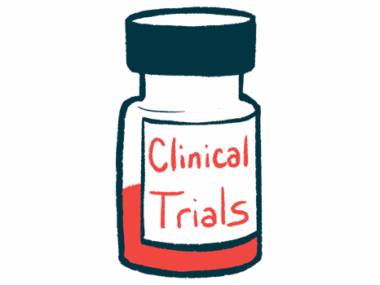Patients needed for trial of CUE-102 for hard-to-treat glioblastoma
New immunotherapy aims to heat up treatment of 'cold' brain tumors
Written by |

Enrollment is now open in a U.S. clinical trial testing the immune-modulating therapy CUE-102 in people with recurrent glioblastoma, an aggressive form of glioma — a group of brain tumors that are hard to treat or come back after treatment.
The Phase 1 clinical trial (NCT06917885), recently launched in Boston, aims to recruit 18 adults with glioblastoma that has recurred after prior therapies. To be eligible, participants must have already received certain standard treatments, and must meet specified criteria related to tumor genetics and organ function.
All participants will receive treatment with CUE-102, with the main goal of evaluating the safety of the experimental therapy, according to a press release from Cue Biopharma, its developer.
Patient recruitment is ongoing at the Dana-Farber Cancer Institute in Massachusetts. A second location in Boston, at Brigham and Women’s Hospital, is also expected to enroll participants in this trial. Dana-Farber is sponsoring the study, while Cue Biopharma is providing the experimental therapy being tested.
“Glioblastoma remains one of the most aggressive and hard-to-treat cancers, and as a result, there is a pressing need for more effective therapies,” said David A. Reardon, MD, principal investigator of the study and clinical director of Dana-Farber’s Center for Neuro-Oncology.
Glioblastoma trial in Boston aims to enroll 18 adults
The human body’s immune system is equipped to kill cancer cells, but many tumors are immunologically cold — meaning that the tumor cells have manipulated their environment so that it’s inhospitable for immune cells. This makes it hard for the immune system to carry out an effective anti-cancer attack.
Glioblastoma, a type of brain tumor that arises from the uncontrolled growth of cells called astrocytes, is typically immunologically cold.
CUE-102 is designed to provoke the immune system to attack a specific molecule called WT1, fully, Wilms’ Tumor 1 protein. WT1 is an oncofetal protein, meaning it normally is made during fetal development but stops being produced in adulthood. It is expressed at high levels by many cancer cells.
The experimental therapy specifically aims to activate T-cells, a type of immune cell, to attack WT1, thereby directing the immune system to more effectively go after the cold cancer. CUE-102 is administered intravenously, or by infusion into the bloodstream.
We believe the mechanism of action of CUE-102 … has the potential to activate and generate an enhanced anti-tumor immune response against glioblastoma.
“Investigational treatments targeting WT1 in [glioblastoma] have shown a potential correlation between expansion of antigen-specific T cells and survival,” Reardon said. “CUE-102 is designed to target tumor cells by activating WT1 specific T cells, which may improve clinical outcomes in recurrent [glioblastoma].”
Matteo Levisetti, MD, chief medical officer at Cue, noted that tumors in glioblastoma are “immunologically ‘cold’ … representing a disadvantage for treatment with standard immunotherapies.” Levisetti said CUE-102 has the ability to “preferentially activate and expand WT1 tumor-specific T cells,” which may be effective in this rare cancer.
“We believe the mechanism of action of CUE-102 … has the potential to activate and generate an enhanced anti-tumor immune response against glioblastoma,” Levisetti said.
Levisetti said Cue is looking forward to reporting findings from this investigator-sponsored study.






